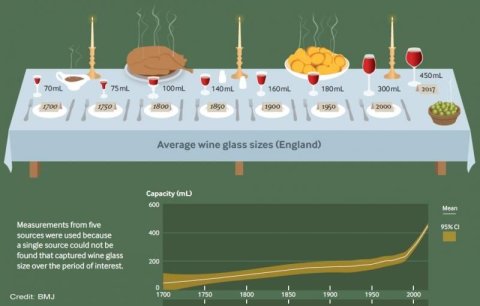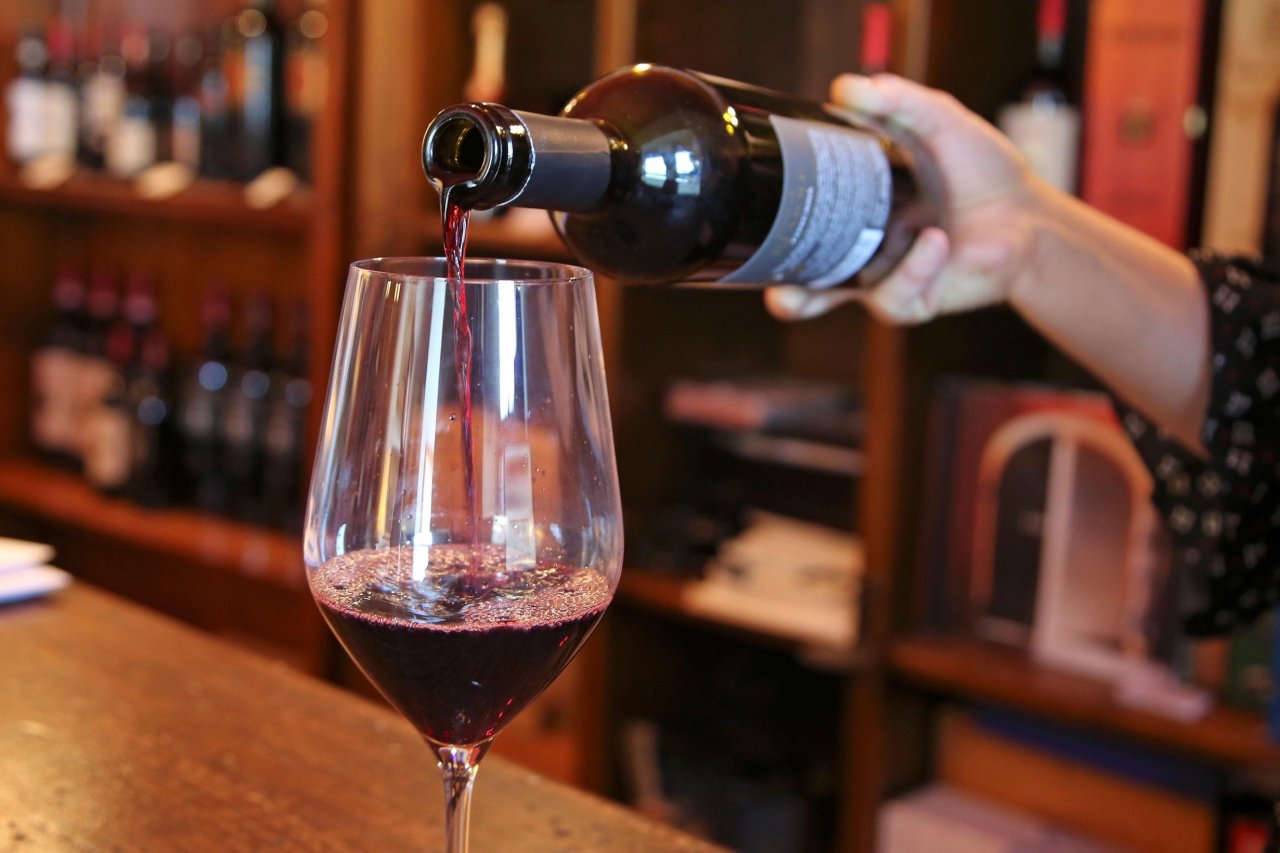Drinking a glass of wine today has a whole different meaning than it did some 300 years ago. A typical glass of vino filled to the rim in 2017 would be the equivalent of nearly seven glass-full's in 1700, according to a new analysis.
The research, published Wednesday in the medical journal BMJ found that the capacity of the average wine glass increased from 66 milliliters (2.2 ounces) in the 1700s to a whopping 449 millimeters (15 ounces) today. But, of course, saying you're having just one more glass of wine may seem modest, even when that glass is, well, rather trough-like.
"We know from research on food that larger tableware leads to larger servings which, in turn, leads to people eating more, often without awareness," Theresa Marteau, professor of behavior and health at Cambridge University told Newsweek in an email. As she explained, the same amount of wine contained in a larger container looks smaller, leading us to believe that we haven't, in fact, truly had that full, first glass of wine.

"If we perceive we have not had a full glass of wine (due to our perception driven by glass size) this might lead to us to have another glass," Marteau said.
Marteau and her fellow Cambridge University researchers obtained measurements of 411 glasses held in museums and shops in England, from 1700 to present-day. They analyzed the volume of glasses manufactured within this period and found a steady uptick in size. Marteau explained that it's not just that we drink from enormous wine glasses today, another factor is that back in the 18th century, there were financial considerations that may have kept people's servings in check.
As cognitive psychologist and lead author Dr. Zorana Zupan explained in a statement, English businessman George Ravenscroft spearheaded the development of lead crystal glassware in the late 17th century. The material allowed for less fragile glassware and meant more glugs could be poured into each glass. But a tax on glass in England from 1745 to 1845 discouraged the production of larger wine glasses.
After the mid-1800s, the increase in wine glass size was incremental, even as costs for glass dropped. Then, in the 1990s, the wine glass sizes began to swell, according to the authors. They theorize the increase in size was linked to a growing appreciation of wine varieties—and glasses tailor-made to feature them. As Marteau said, large glasses, "can increase the pleasure from drinking the wine, allowing more aromas to be released."
Bar and restaurant owners may also have played a role in encouraging the ballooning in wine glass size after catching on that patrons may be willing to buy more drinks when they're served in oversized vessels. Marteau and a different team of colleagues found in a 2015 study that when establishments sold wine in larger glasses, their sales improved by nearly 10 percent.
The fact that people are quaffing from bigger and bigger wine glasses may be more significant considering that the drink itself has been growing in popularity, particularly among millennials. A study last year from the Wine Market Council found that millennials drank 159.6 million cases of wine in 2015, amounting to 42 percent of all wine consumption in the U.S. that year. As younger drinkers took a liking to wine, there was a parallel increase in the number of high-frequency wine drinkers, or those who say they drink wine several times a week or daily, the data showed. The same 2016 study noted a surge in the U.S. of the percentage of high-frequency drinkers between 2005 and 2010.
If each "drink" today amounts to double or more the amount of wine served in past years, it appears many could be headed for a drinking problem, Marteau says. She suggests that the government, at least in England, could play a role in keeping our servings in check.
"Regulating the size of wine glasses is one option worth considering for reducing consumption of alcohol and in turn the adverse health consequences from this," she said.
At the very least, a little regulation could possibly help prevent some nasty morning-after hangovers.















